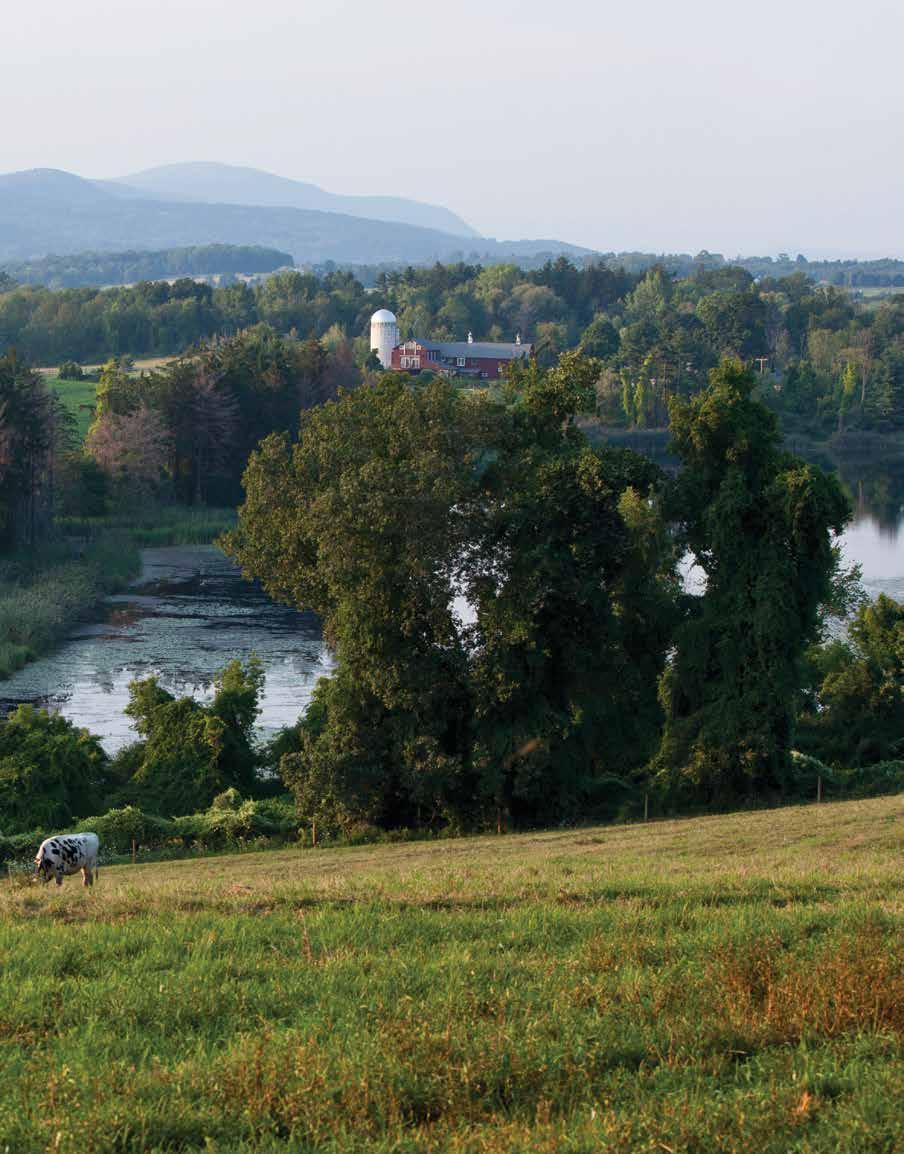
7 minute read
THE CONSERVATION FELLOWSHIP
BY ELIOTT GROVER
There’s a stretch of road between Sharon and Lakeville that features some of the most spectacular vistas in New England. The Berkshires loom in the north, the Catskills hang on the western horizon, and farmlands roll under the hills of the Red Mountain range to the east. This panorama of rustic glory is well known to generations of Hotchkiss students. Less known, perhaps, are the tireless conservation efforts that have kept it undisturbed. Over the decades, many members of the Hotchkiss community have contributed to this work. In recent years, three alumni have helped lead the way.
Roger Liddell ’63, P’98, Chris Clow ’65, P’04, and Nick Moore ’71, P’89,’01,’06 have many things in common. At the top of the list is a lifelong love affair with Connecticut’s Northwest Corner. “You can’t help but be affected by the splendor that surrounds you here,” Liddell says.
Like Liddell, Clow’s fondness for the area traces back to his days at Hotchkiss. A midwesterner who inherited his father’s love of flyfishing, Clow felt right at home in the Upper Housatonic Valley.
Moore grew up in Manhattan, but his family had a home in Sharon where he spent as much time as possible. “I liked being in the country and living a rural life,” he says. “Summers on the farm and driving cars around the field. That kind of thing.”
Over time, the three men have all made homes in Sharon. Clow and Liddell both arrived in the mid-1980s with their young families in tow. Moore was already here with his own. Although they didn’t overlap much at Hotchkiss, they have become close friends as neighbors. Their bond centers around their shared passion for the Northwest Corner, which they have worked together to protect through the Sharon Land Trust (SLT) and other conservation organizations.
“There are certain places you pass almost every day that you just hold in your heart,” says Clow. “You see them and you cherish them. And yet, unless there’s attention being paid and some good planning, that could change in the blink of an eye.”
The SLT is a private nonprofit that seeks to prevent this kind of devastating change. For the last four years, Liddell and Clow have served as co-presidents. Moore, who previously served on the board, is active in many conservation initiatives at the state and federal level. Former Hotchkiss Head of School Skip Mattoon is also a current board member. Since its founding in 1982, the SLT has permanently protected roughly 3,500 acres of vital land through easements and acquisitions. This includes much of the Route 41 viewshed.

The Goodbody Preserve
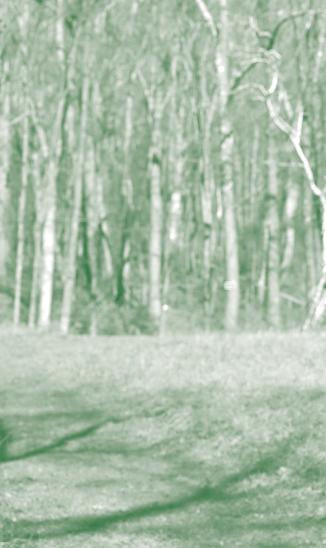
Two of Sharon’s four principal ridgelines are Indian Mountain to the west and Red Mountain to the east. Beyond their beauty, the mountains and woodlands are critical to the local watershed and support an array of flora and fauna.
“We’re trying to protect what is a long-recognized and established wildlife migration corridor so that it’s as unbroken as possible,” Liddell says. Clow noted that “science is at the heart of what we try to do—to really understand how to take care of the soil, the land, the trees, and the water.”
Thanks to the benevolence of conservation-minded residents and the SLT’s perseverance, much progress has already been made to protect these two mountains. In 2001, the SLT purchased a 107-acre parcel on the south face of Indian Mountain. The deal, which took years to finalize, was single-handedly negotiated by Garrett Goodbody ’63, a longtime SLT board member who passed away in 2003. In 2013, the SLT named the parcel the Goodbody Preserve.
“Garrett was there 30 years ago in terms of recognizing the value of conservation,” Liddell says. He credits Goodbody with sparking his own passion for this work. The two became best friends during their lowermid year at Hotchkiss, a bond that only grew stronger with time. “The way I explain our relationship is like this: I never had a brother except for Garrett.”
The Goodbody Preserve includes a two-mile loop that features stunning views of Sharon Valley. Creating and maintaining a trail through steep woodlands is not easy work, but the SLT’s dedicated volunteer corps is always up for a challenge.
“There are a lot of us, mostly 60 and older, who have some time in the morning to do it,” says Moore, an enthusiastic volunteer. “It’s well organized. We have three or four sort of captains, and we’re pretty autonomous in a lot of situations.” The volunteers clear brush, maintain trails, and have recently learned how to identify and remove invasive plants such as bittersweet, a serpentine vine that strangles trees. This last piece is part of the SLT’s stewardship program, which Liddell has led with vigor.
The miles of trails that volunteers have turned out in droves to build speaks to the SLT’s success at engaging the community. It’s hard work, but it’s a labor of love. “There’s a lot to do,” says Moore. “You need a pick mattock and McLeod fire rake to scrape the dirt off right down to the mineral soil. It’s not just putting some markers in the woods.”
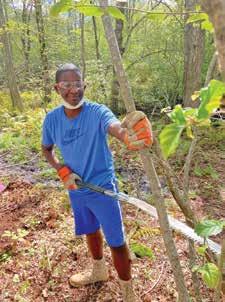
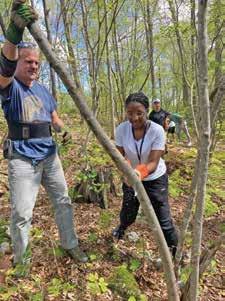
In recent years, Hotchkiss students have lent their hands. Liddell was instrumental in helping the School launch its Day of Service program in 2011, an initiative aimed at encouraging students and alumni to volunteer in their local communities. Moore has fond memories of working with Liddell and a group of students on a section of the Goodbody trail. “We were sort of huffing and puffing, but we had these athletes up there,” he says. “We gave them pickaxes and turned them loose. It was amazing. They really got a lot done. They’re very enthusiastic and great to be around.”
The Mary Moore Preserve
Students have also volunteered on another significant property, one that holds a special place in Moore’s heart. In 1979, his mother, Mary Moore, purchased 181 acres of land along Red Mountain in order to save it from development. When she passed away, she left it to the Sharon Land Trust in her will.

The Mary Moore Preserve contains five distinct habitat types and is critical to the local water supply due to its location above a town-owned reservoir. With an active cow pasture set beneath Red Mountain, it is a postcard of pastoral beauty. The trail system, on which Hotchkiss students have worked, includes exceptional views that encompass three states.
“It’s one of our most prized preserves,” says Clow. “A lot of work has gone into maintaining it. One of our real goals is to extend the trails that are on the Mary Moore Preserve all the way north up to Hotchkiss and try to tie in with the Hotchkiss trail system.”
Shaping Conservation
These aren’t the only new trails the SLT plans to build. In September, it purchased the Von Ahn farm, a large parcel on Indian Mountain north of the Goodbody Preserve. The deal, which was many years in the making, highlights how Liddell, Clow, and Moore have collaborated so effectively for so long. “The key is that we totally trust each other, and we know how committed we all are,” says Clow, who oversees the Land Trust’s acquisition work.
“Chris is really good at acquisitions,” Liddell says. “He knows people, he knows what’s going on, and he’s able to be effective in that quiet way. There’s a lot of confidential work.”
The three alumni communicate with total transparency. Liddell pinpoints their Hotchkiss bond as the bedrock of their working relationship. They are all quick to express gratitude for the education they received and the impact it has had on their work. “The conservation ethic doesn’t sell itself,” Liddell says. “It has to be championed and sold to the public. What the School did was teach us how to write and think clearly, which has allowed us to articulate conservation messages with clarity and force.”
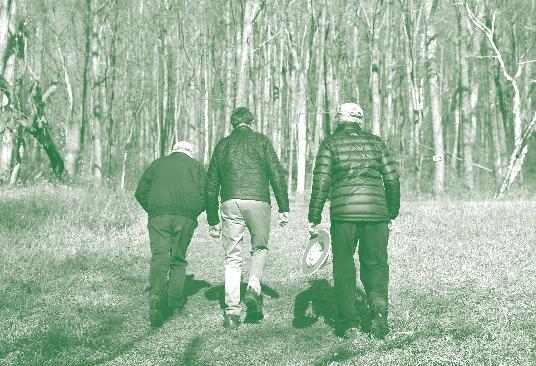
Although Moore is not officially part of the SLT’s leadership, he is a valuable partner and advisor. Over the last three decades, he has amassed a wealth of experience learning how to navigate the confluence of political, legal, and financial channels that shape conservation work. He has spent a considerable amount of time in Hartford and Washington, D.C.
“My whole purpose was to learn enough that I could bring back information to the Sharon Land Trust and others,” he says. “I decided just from looking around the area that somebody needed to get beyond Sharon. If you wanted to do serious conservation work, you had to get to where the action was. And that was in the state legislature.” He credits fellow alumnus Andrew Roraback ’78, a state representative who has since become a judge, with providing advice and helping secure funding for conservation projects. “You always need a champion in the legislature, and Andrew stepped up big time,” Moore says.
Moore’s vast experience has given him a seat at the table for landmark policy debates. When the IRS tried to eliminate tax deductions for conservation easements, a move that would have sounded the death knell for many land trusts, Moore helped defeat the proposal through his involvement with the Land Trust Alliance, a national trade organization. In response to the government’s criticism that too many individuals were gaming the system, the Land Trust Alliance created a rigorous accreditation program that convinced the IRS to retreat.
“I admire Nick tremendously because he was really smart to try to pursue conservation work at more of a national and state level,” Clow says. “He’s done things that are way beyond anything I’ve ever done. We are so much better because of that.”
The mutual respect the three alumni have for each other is as tangible as the impact their work has had on the local community. Operating amid relentless development pressures, their efforts have protected beautiful landscapes, coveted recreational space, and critical ecosystems. Eternally humble, they’re quick to deflect praise, preferring to see themselves as temporary torchbearers in a movement that will never end.
“There’s a line that comes up frequently with this work,” Liddell says. “Conservation isn’t a destination. It’s a journey.”
Moore smiles when he hears this before offering his own spin. “The bear went up the mountain, and what did he see? He saw another mountain.” H









